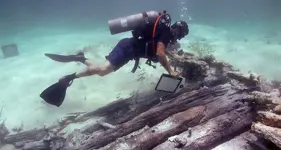Hmm, the samples were contaminated.
So evidently the testing firm acknowledged that the samples were contaminated. In the Oak Island tests as I recall only one sample was considered too contaminated for an accurate test, but again it was acknowledged.
No, the tests were correctly done and you might as well give up on that line of reasoning.
Btw, your own dating is also quite skewed. An 1848 sample is what you claim the three boys found?
Note also that it was Middle Eastern Coir!
Loki, Loki, Loki-you really need to read that post. No where do I say that those intrepid lad's rope was made from coir.
As for the 1848 date, that referenced an ARCADIAN RECORDER newspaper add for the firm of W M Stair & Co ropeworks in Halifax , Nova Scotia on the Avon River that had been in business since 1810, and imported Middle Eastern coconut coir.
...but thanks for a current example of manipulation of facts to misrepresent their actual meaning to support a fragile position.
Now back to the discussion, please attempt to pay attention.
You cite these dating tests, especially BETA ANALYTICS as evidence of Templar activity on Oak Island due to their plus/minus dating.
What you do not take into account, is the chain of custody provenance of that coir sample from discovery to the lab for testing.
As mention concerning the sample submitted to Wood's Hole labs, it was brought for testing by a company representative that had a vested interest in treasure hunting activities, making the coir sample provided suspect because of this lack of provenance.
Questions concerning chain of custody provenance that need to be addressed before BETA ANAYLTICS dating results can be accepted as actual accurate "evidence" of this alleged Templar activity:
1. Who recovered the coir and where was it taken for verification.
2. When was it recovered, and was a sample of the soil included during this recovery.
3. Were photos taken in situ and the find verified and cataloged by professionals.
4. Was the sample sent to BETA ANALYTICS a fresh sample or was it in storage or displayed for several years in a museum acquiring additional contaminants before submission.
5. How was it presented, packaged and by whom, and how was it delivered for this dating, and was the soil included.
6. Was preconceived expectations mentioned to BETA ANALYTICS before testing.
7. Was the sample professionally validated as actually being found on Oak Island to eliminate the possibility of substitution.





